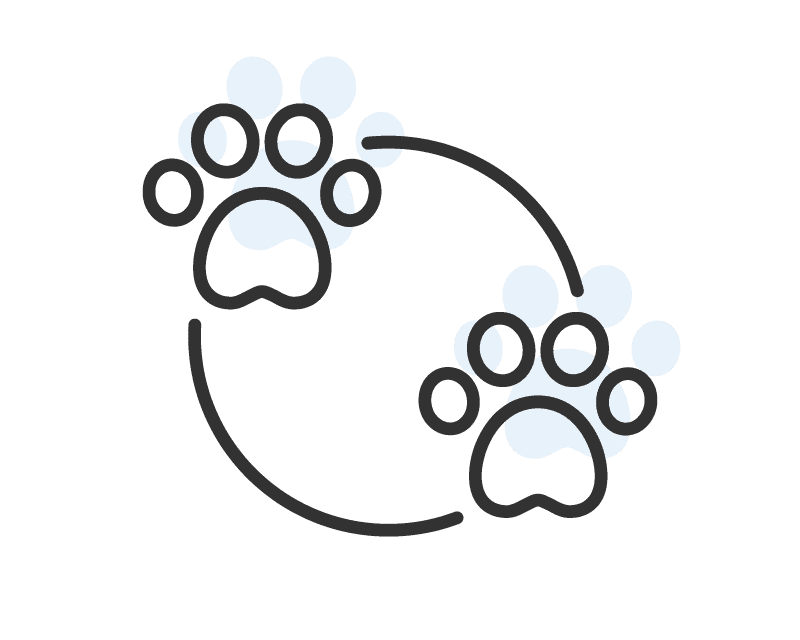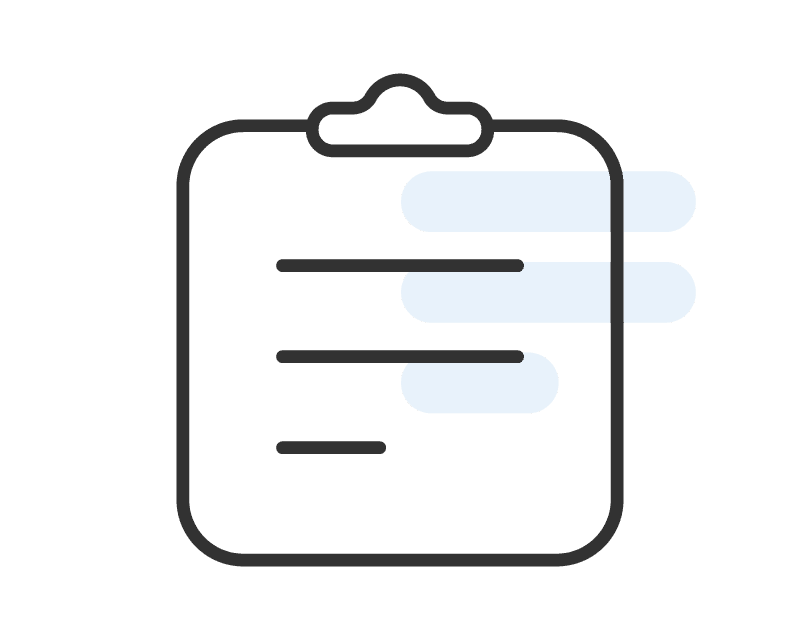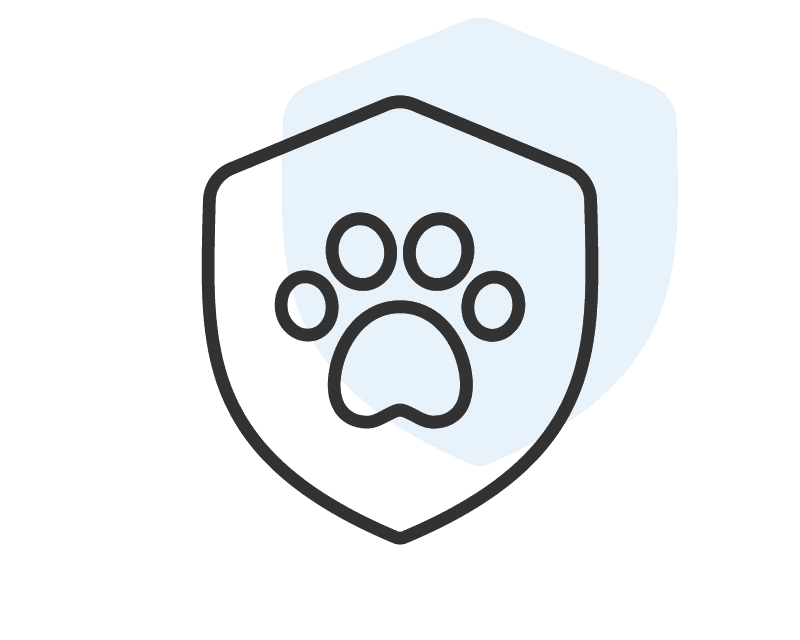Register
Helpful Links
Registration FAQ
What data will we be required to share?
You will be providing monthly summary data to The National Database using the Basic Data Matrix. This includes information on dogs and cats broken out by age category, intake and outcome information, and facility-specific data.
Shelter Animals Count will provide the specific definitions for each category, eliminating ambiguity and ensuring consistency if data is rolled up beyond the local level. When you are first registered as a participant, you will need to provide monthly data beginning with the previous month. The database will also provide for historical data inputs as far back as 2011, if you have that data available to report.
The Basic Data Matrix is intentionally basic in its effort to provide a common framework for data collection whether organizations already gather a great deal of data or have only gathered the basics. Shelter Animals Count is exploring additional data collection means that would further benefit the animal welfare community.
Why should my shelter participate?
This lifesaving effort depends on all of us – your data has the power to help not just the animals in your care, but animals everywhere! In addition to helping you better understand the ins and outs of your sheltering operations, the national database provides the opportunity to view data from similar organizations with similar community demographics, climate, geography, and other variables that impact the work we do.
Shelter Animals Count provides you with a wealth of information on national trends that may affect your organization, improves visibility and reporting options for grant applications, fundraising and coalition-building efforts, and opens the door to a world where we’re all working better – and smarter – together. But we can’t do it without you!
What are the terms of participation?
Shelter Animals Count (“SAC”) maintains a database of animal shelter data (the “Database”), in an effort to create a national database for the animal welfare field (the “Project”). When a shelter (“Shelter”) provides information (the “Information”) for the Database, it will be provided and used on the following terms:
1. Shelter agrees to submit complete data into the SAC data matrix portal each month.
2. Permission to use Information. SAC has permission to use any Information submitted by Shelter to SAC in the Database at no cost to SAC. This permission will be on a non-exclusive, worldwide, royalty-free, permanent basis, meaning that Shelter may give others permission to use the Information in addition to SAC; that the Database may be used anywhere and without time limit; SAC does not have to pay any royalties for using the Information in the Database.
3. Permitted uses of Information. SAC may use the Information by compiling it with the data of other participating organizations and otherwise supporting its development of a national database for the animal welfare field. SAC may make the data in the database available to members of the public, both by making it available for review on SAC’s website and also by releasing the data in CSV or comparable format. SAC may include the Information in data analysis projects, and may disclose, publish, or present the results of those projects for any lawful purpose relating to the Project, including demonstrating the Project to potential funders. SAC may not, however, disclose, distribute, present, or publish any of the Information in a way that discloses the identity of any animal or any person associated with an animal.
4. Shelter owns the Information. Shelter does not transfer ownership of the Information to SAC, and these Terms of Use do not limit or restrict in any way Shelter’s ownership of the Information. Shelter reserves all rights in and to the Information not specifically granted to the SAC in these Terms of Use.
5. Shelter’s and SAC’s representations to each other. Shelter represents to SAC that the Information is accurate and that it is not limited in any way from sharing the Information. Shelter agrees to SAC’s TERMS OF USE AND PRIVACY POLICY.
What is the Coalition Builder?
Shelter Animals Count has added a new tool that will make the data portal even more valuable for our participating shelters and rescues, as well as coalition leaders across the country.
The Coalition Builder will make tracking data and data trends across groups of participating shelters incredibly easy.
Coalitions can be any size, represent any geographical area or be issue focused (like a breed specific coalition of rescues).
Participation by shelters and rescues is entirely voluntary. Coalition leaders will extend an invitation – it’s up to shelters and rescues to decide which coalitions they’d like to join. Rescues and shelters can also request to be added to an existing coalition.
Once a coalition has been formed, the coalition leader or other assigned users can run downloadable data reports for the group as a whole or by member organization.
Funders can form a coalition within Shelter Animals Count and invite their grantees to participate, providing an opportunity to consolidate and streamline data reporting.
Is TNR data being counted?
While intervention work like TNR is critical to improving individual animals’ lives and reducing shelter deaths, the national database project does not currently capture prevention activity.
TNR groups with a rescue component are encouraged to join and report data on the placement of those cats, as well as shelters with an SNR program. However TNR or clinic data should be excluded from the database.
How does this change the conversations I can have with my community?
As the old adage goes, you can’t manage what you don’t measure, and by participating in this effort, you can begin driving specific actions or initiatives, using data to save more lives and elicit the support you need by building compelling, data-based cases for assistance, if and when you ever need it.
By having clear, tangible data to share with your stakeholders – from the public, to elected officials, to funders, and many more – you have the ability to tell the story of the true impact your programs and services have on the animals you care for, as well as the community at-large.
The transparency that sharing your data provides can foster greater trust and collaboration among animal welfare partners, as well as those working across all levels of public and private enterprise, in your backyard and beyond.
What is Shelter Animals Count going to do with the data?
The national database is intended to be a tool for you and your community at the local level to understand the trends, opportunities, and challenges you face, and to help create a picture of how those evolve to the regional and national levels.
Shelter Animals Count is comprised of animal welfare professionals like you, many of whom have lengthy backgrounds or active relationships with major animal welfare organizations across the country. We’ve come together to promote an open, fact-based, and respectful national data collection effort.
By providing comprehensive, collaboratively-sourced data, we enable a greater understanding of the state of animal welfare and how we can all increase our positive impact for the animals we are privileged to serve.
Who will this data be shared with?
The national database will have the capability to share public data through its website, ShelterAnimalsCount.org and may also release the data in a file export upon request.
In addition, many of the organizations that currently collect data from shelters, rescues, and other institutions for grant and community reporting purposes (such as PetSmart Charities, Best Friends Animal Society, the ASPCA, and more) may elect, in the future, to use Shelter Animals Count as a means for submitting data, potentially reducing your reporting burden dramatically.
Wouldn’t it be wonderful to have just one place to enter your data? While we strongly encourage participating shelters to be transparent in agreeing to make their data public, we will enable those contributing data to opt out from their data being identifiable, if requested.
How is this different from past efforts such as Asilomar, Naked Data, etc.? Why should I adopt this version of data reporting?
As data and reporting efforts have evolved in the field, many of the national groups involved with data collection understood that it was time to reconvene and reach a broad agreement on what kind of data is most useful to collect and how we can best capture the lifesaving data resident in our communities.
Based on existing data reporting structures, such as those that came out of the Asilomar Accords, and incorporating what we’ve learned through the reporting efforts of animal welfare organizations and funders, Shelter Animals Count has gained consensus and commitment to a standard set of statistics that could be captured in every community with relative speed and ease. We know you’re busy, and we’re here to help make meaningful data collection easier so you can get back to the business of saving lives!
What’s the risk involved with sharing this data?
Whether or not your data is already shared publicly, you’ve likely considered the pros and cons of doing so in the past, and it’s a sensitive subject, we know.
With transparency comes the reality that your stakeholders may ask questions to gain a better understanding of the challenges and decisions your organization faces, or worse, make assumptions that may not be based in fact – and this can and does happen, whether or not your data is currently being published.
And while sharing data may lead to a few potentially difficult conversations or misunderstandings about why your organization makes certain decisions or operates in a certain way, it also gives you open access to clear, concrete data that you can use help dispel myths or rumors, and pave the way for honest dialogue, enabling you to build trust within your community and rally supporters to your cause.
Will there be support for me to provide my data? How will that process work?
Yes, you will have access to online resources as well experts in data collection, including animal welfare data collection, who can answer your questions or provide guidance along the way.
What types of organizations, other than animal shelters, should register to contribute data?
Fostering organizations, animal care and control agencies, and any organization that is involved in activities such as animal adoptions, transfers, etc. and have intake and outcome data to contribute.
If I make a mistake in my data submission, or if a number changes after we’ve finalized our counts, can I go back and fix it?
Yes, you will have the ability to go back and edit your records, if necessary.
After historical data is uploaded, how often will we be sharing periodic data? Monthly? Quarterly?
Shelter Animals Count’s data reporting frequency is monthly. The Data Dashboards are updated and published quarterly.





